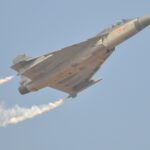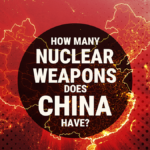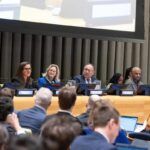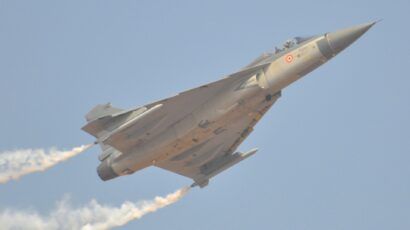NATO-Russia relations after the Newport Summit
By Margarete Klein, Markus Kaim | October 2, 2014
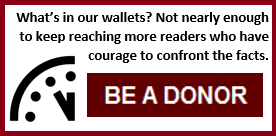
Russia’s recent annexation of Crimea and its destabilization of eastern Ukraine dominated the conversation at the NATO summit in Newport, Wales, early in September. Apart from the decisions to create a high-readiness force and an action plan for Eastern Europe, however, the conference did not pay much attention to the long-term prospects for NATOʼs relationship with Russia. But those prospects should have had the highest priority at the summit, for this relationship is probably one of the most important between powers today, with the potential to stoke old Cold War rivalries again—among adversaries still armed with hundreds of tactical nuclear weapons and thousands of strategic nuclear warheads, not to mention large conventional forces.
This relationship was not always so worrisome. After the collapse of the Soviet Union, the situation between NATO and Russia looked relatively rosy for many years. Until the outbreak of the Ukraine crisis, the Atlantic alliance had ambitious goals for relations with Russia, as can be seen by such documents as the “Founding Act on Mutual Relations, Cooperation and Security between NATO and the Russian Federationˮ of May 1997. Reflecting the cooperative spirit of the 1990s, the two sides not only agreed in numerous areas, but also described their view of one another in generous terms. NATO and Russia no longer saw themselves as opponents but instead strove to build a “strong, stable and enduring partnership.ˮ In return for tolerating NATOʼs first round of eastern expansion, then already under way, Moscow was assured that the alliance would not station nuclear weapons or substantial numbers of troops in its new member states.
In 2002, the two sides further deepened their cooperation by creating the NATO-Russia Council, or NRC. This allowed NATO members and Russia not only to discuss a range of questions on security policy, but also to try to resolve them together. Ultimately, this cooperation was accorded high priority in NATOʼs Strategic Concept of 2010, the core document that establishes the transatlantic consensus. The governments of the NATO states ranked security cooperation with non-NATO countries just after mutual defense and international crisis management in the priorities of the alliance in the European-Atlantic arena.
But NATO’s hoped-for partnership with Russia has failed for a variety of reasons, as demonstrated most spectacularly by events in Crimea and eastern Ukraine. Now, the alliance’s long-term relationship with Russia needs to be thought-out and clearly expressed. Otherwise, this relationship could slowly, steadily, and imperceptibly proceed downward, with major repercussions not only for the Euro-Atlantic area, but for the international order in general.
Why the strategic partnership failed. The fact that NATOʼs desired “strategic partnershipˮ did not come to fruition is partly due to the asymmetrical balance of power between the United States and Russia, but more particularly due to an overall lack of common interests. Russia and NATO have cooperated very closely in some areas—most notably on international crisis management in Afghanistan and in the areas of counterterrorism, disarmament, and arms control. But the NRC lacked a showcase project that everyone could get behind. Hopes that limited cooperation over missile defense could improve the quality of overall relations between Russia and NATO were dashed when the two sides’ expectations could not be reconciled.
The NATO-Russia strategic partnership also failed because there was no shared concept behind the form that bilateral relations—and the intended Euro-Atlantic security framework—should take. Moscow requested (some would say demanded) an equal say over all the continent’s key areas of security policy, along with veto power over anything it did not like. Moreover, the Russian leadership insisted that the post-Soviet geographic area should be recognized as Russia’s exclusive sphere of influence. NATO could not accept these conditions, as they contravened its basic principles, such as the right of free choice to form alliances, laid down in the Charter of Paris.
This conflict, which has both political and ideological dimensions, intensified during Putin’s third term in office. Lately, the Russian president has been trying to justify his claim to leadership in the post-Soviet region by casting Moscow as the protective power for the entire Russian-speaking cultural community—calling into question the inviolability of state borders.
Moreover, Moscow has been relying less on the rule of law to achieve its interests than on political, economic, and military power. In pursuing its Eurasian integration projects in general, and its Ukraine policy in particular, Russia aims to reach a position of strength from which it can forcibly renegotiate the Euro-Atlantic security framework to promote Russian interests and “red lines.ˮ This transnationalization of Russian security policy presents an entirely new set of challenges to Western security policy makers, who view the Euro-Atlantic area almost exclusively in terms of established states with firm borders.
Consequences of the Ukraine crisis. Since Russia has annexed Crimea and seems determined to destabilize eastern Ukraine, it has lost its status as a strategic partner of NATO—at least for the time being. In April 2014, in response to Russia’s actions, foreign ministers of the NATO states suspended all day-to-day military and civil cooperation between NATO and Russia with the exception of the NATO Council, the highest decision-making body of the alliance. Some members even expressed the view that NATO-Russia relations should be broken off entirely. (However, this is not the majority position, which argues that if the NATO countries stop abiding by existing obligations, they risk losing their own credibility.)
NATOʼs long-term view remains one of re-incorporating Russia into the Euro-Atlantic security framework. In line with this view, cooperation should only be temporarily reduced. In any event, even this is largely a symbolic policy, as many governments continue to cooperate with the Russian leadership, for instance in the area of energy supplies and on issues concerning international counter-terrorism.
Possible scenarios for NATO-Russia relations. Since the partnership model for relations between Russia and NATO has failed, the alliance is faced with the question of how to shape its future relationship with Moscow.
Three courses of action are available, each with different ramifications for the possibility of partnership with Russia.
Containment. Proponents of containment believe that Moscow can only be prevented from pursuing its aggressive policies by meeting force with force. This would mean abandoning military caution about the permanent stationing of troops and equipment in new NATO states. It would also mean expanding NATOʼs collective defense capability against Russia.
But those who defend this position are overlooking the risks and limitations of such a strategy. Although it would deter Russia from a military attack against the Baltic states or Poland, it is unclear whether this approach would prevent the use of the kind of stealth destabilization strategies seen in Ukraine—such as the mobilization of Russian minorities, fighting by proxy, hybrid warfare (e.g., irregular militia operations), propaganda, and economic sanctions.
Above all, a policy of containment does not solve the fundamental problem of competition over the political order in the post-Soviet area. As long as Ukraine, Georgia, and Moldova remain outside NATO, their powers of deterrence will be too weak to protect them effectively. Granting accelerated membership is no solution either; it would only serve to further entrench the current conflict between Russia and NATO, making cooperation practically impossible even on questions of common interest.
Peaceful coexistence. Another option would be to return to the hands-off model of peaceful coexistence that characterized a surprisingly large amount of the Cold War period. Under this stratagem, there would be no prospect of integrating Russia into Euro-Atlantic institutions and principles of behavior. However, the two sides would agree not to resort to military action in their conflict, as this would be damaging to both.
At the same time, peaceful coexistence means defining and acknowledging one another’s sphere of influence. NATO would almost certainly not be able to go along with this process, as it would mean giving up the principles and norms that it had agreed to with Russia in 1990. The notion of a state’s sovereignty over its foreign policy and territorial integrity would then only apply to NATO members, and not to countries falling within the Russian sphere of influence. Thus the cost of trying to achieve security for NATO would be borne by neighboring states, an outcome that would also cost the alliance its credibility and diminish its influence.
Reassurance, cooperation, and security guarantees. It seems, then, that the stability of the Euro-Atlantic area would benefit from a strategy that provides reassurance to eastern NATO member states while at the same time keeping the offer of cooperation with Russia open.
This reassurance does not mean relinquishing existing political obligations at the core of NATO’s founding, which must be adhered to if Russia continues its aggressive destabilization of other states. However, channels of communication and those forms of cooperation that serve common interests should be maintained.
Crimea obviously is the stumbling block to all this. Yet there may be a way to isolate—politically and legally—the issue of this territory’s annexation, so cooperation remains possible. A model for this kind of “agree to disagree” policy is the way Western governments cooperated with the Soviet leadership during the Second World War, despite not recognizing the Soviet Union’s annexation of the Baltic States in 1940.
Smoothing the road to rapprochement. As long as Moscow continues to subvert and destabilize eastern Ukraine, the position of those who favor containment will be strengthened. And unless Russia changes its policy towards Ukraine, a cooperative attitude on the part of NATO towards Russia will be unimaginable.
Rapprochement would require not just an institutional framework outside the NATO-Russia Council (which is where the Organization for Security and Cooperation in Europe, for example, could play an important role); it would also require the Russian leadership to make concessions to NATO over several security issues that have been controversial in the past. Willingness to compromise in these areas could really open doors, especially in relation to missile defense or reducing tactical nuclear weapons stocks.
If the conflict over the political order of the post-Soviet area is not resolved, cooperation will remain shaky. NATO’s dilemma is that on the one hand it wants to avoid the appearance of making decisions over the heads of the countries involved (which means it can only agree to a solution that also has the consent of Ukraine, Georgia, and Moldova), but on the other hand, it cannot simply grant those countries NATO membership, because that should depend solely on whether they fulfill membership criteria. The “external factor of Russiaˮ should have no influence over such decisions, either as a veto power or as a justification for hurriedly—and perhaps prematurely—allowing new members to join.
It is therefore worth considering ways to create security in Russia and NATOʼs shared neighborhood without granting formal NATO membership to the countries in question. Neutrality has often been proposed as a solution in this debate; however, this would increase security for those countries only if it included specific agreements and guarantees.
Given that Moscow’s annexation of Crimea violated the Budapest Memorandum on Security Assurances, Russian guarantees are no longer very convincing. Although Western assurances have also become questionable as a result, NATO could provide security guarantees to the relevant countries without actually granting them full membership of the alliance. Rather than collective defense, NATO could commit to providing clearly stipulated help in case of an attack, such as swift deliveries of weapons. The EU could also make a useful contribution here: Its Association Agreement with Kiev is an expression of Ukraine’s Western orientation, which the Russian leadership is seeking to prevent. Any attempts, therefore, to make the agreement compatible with the Eurasian Economic Union would be helpful from a security policy perspective.
Together, we make the world safer.
The Bulletin elevates expert voices above the noise. But as an independent nonprofit organization, our operations depend on the support of readers like you. Help us continue to deliver quality journalism that holds leaders accountable. Your support of our work at any level is important. In return, we promise our coverage will be understandable, influential, vigilant, solution-oriented, and fair-minded. Together we can make a difference.
Topics: Nuclear Weapons, Opinion


